
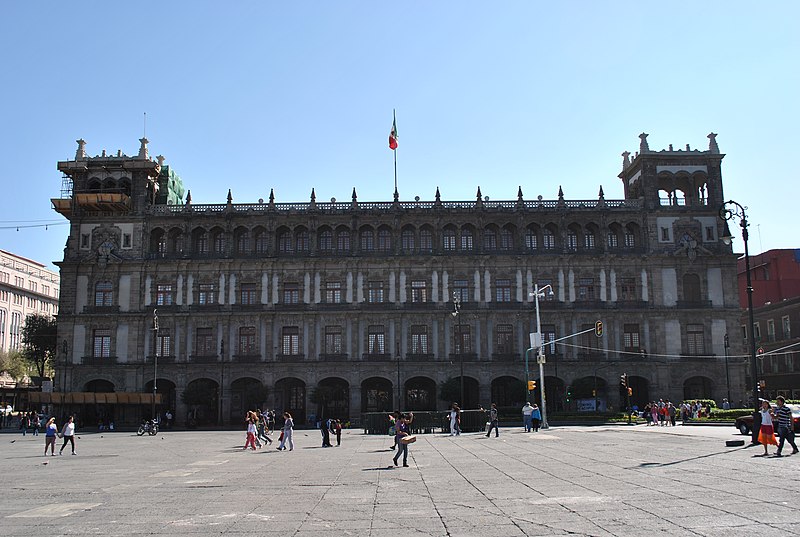
The Antiguo Palacio del Ayuntamiento is the main seat of the Mexico City government. It’s home to a small museum and several galleries which are open to the public. The Cabildos Hall and the Francisco Gamoneda Documentation Center are also inside the building. The first City Council meeting was held here on May 10, 1532.
The building was begun under the orders of Hernán Cortés in 1522. An early version opened between 1527 and 1532. The earliest building undoubtedly used stones from the earlier Mexica temples. Built like a fortress, it served a function in protecting inhabitants from those forbidden to settle in the area. Only the foundations and a few walls of the original City Hall building remain.
In 1714, the City Hall was rebuilt in the Peninsular Baroque style, with arches and ornaments. That remodeling left it with much of its present appearance.
For the Centenary of the Independence in 1910, a further restoration gave the outside appearance the look we see today. That followed nearly 20 years of renovations to the building. A fourth floor was added only in 1934. That coincided with planning for the twin Government of Mexico City Building next door. Construction began in 1941, and both buildings reopened in 1948. The Supreme Court building, on the southeast corner of the Zócalo, was built between 1935 and 1941. That largely completed the southern edge of the Zocalo.
The Palacio del Ayuntamiento remains a particular focus of pride for the City. It’s the sight of frequent press conferences and some official events which will occasionally limit public access.
Those attending the front door will direct visitors to either of the public areas of the building upon request.
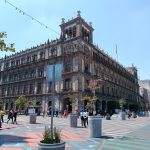 With the fall of Tenochtitlan in 1521, the buildings of the City Council and a new City Hall were built on the southwest corner of the Zócalo. Those old buildings suffered through floods and earthquakes until they were entirely destroyed in the riot of 1692. The main building was then rebuilt between 1720 and 1724 by master builder, Antonio Alvarez. From that time, a room was designated for the collection of the portraits of the Viceroys of New Spain. The building had rooms for the Cabildo (city council), a jail, a grain exchange or market, and a butcher's shop known as the "Manzana de la Diputación."
By 1893, painter Felix Parra and sculptor Gabriel Guerra decorated the Salón de Cabildos, where sixty-one paintings portraying the Viceroys of New Spain survive to this day. In 1903, architect Manuel Gorozpe began to renovate the building, completing it only in 1927. In 1934, the fourth floor was added. In addition to the Salón de Cabildos, it preserves the "Francisco Gamoneda" Documentation Center and recently inaugurated a space called "Ágora del Pueblo" (People's Agora). It is remarkable for the set of tile panels preserved beneath the arches, with various coats of arms relating to characters and sites in the history of Mexico.
With the fall of Tenochtitlan in 1521, the buildings of the City Council and a new City Hall were built on the southwest corner of the Zócalo. Those old buildings suffered through floods and earthquakes until they were entirely destroyed in the riot of 1692. The main building was then rebuilt between 1720 and 1724 by master builder, Antonio Alvarez. From that time, a room was designated for the collection of the portraits of the Viceroys of New Spain. The building had rooms for the Cabildo (city council), a jail, a grain exchange or market, and a butcher's shop known as the "Manzana de la Diputación."
By 1893, painter Felix Parra and sculptor Gabriel Guerra decorated the Salón de Cabildos, where sixty-one paintings portraying the Viceroys of New Spain survive to this day. In 1903, architect Manuel Gorozpe began to renovate the building, completing it only in 1927. In 1934, the fourth floor was added. In addition to the Salón de Cabildos, it preserves the "Francisco Gamoneda" Documentation Center and recently inaugurated a space called "Ágora del Pueblo" (People's Agora). It is remarkable for the set of tile panels preserved beneath the arches, with various coats of arms relating to characters and sites in the history of Mexico.
Heart of Mexico Walking Tour: Zócalo - Templo Mayor Route
< < National Palace | Monte de Piedad > >
Proyecto “Corredor de Cultura Digital”.
Nombre de la investigación: Investigación Centro Histórico, Monumentos, Edificios y Puntos de Interés (2023)
Dirección de investigación y diseño de Rutas: Acércate al Centro A.C. Guadalupe Gómez Collada
Coordinación e investigación histórica: Fideicomiso del Centro histórico Dir. Maestra Loredana Montes
 (55) 5345 8000
(55) 5345 8000
 https://www.cdmx.gob.mx/
https://www.cdmx.gob.mx/

Nearest at 0.02 kms.
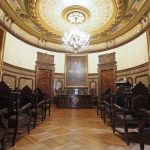
Nearest at 0.05 kms.
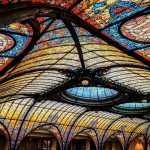
Nearest at 0.06 kms.

A landmark hotel on the edge of Mexico City's main plaza . . .

One of the most important sites in the city, even today, don't miss the chance to visit the Templo Mayor.
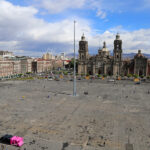
There's no center like the very center, and in Mexico City, that means el Zócalo!
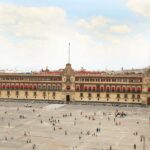
One of Mexico City's proudest, most enormous parts of history, the Palacio dominates the entire east of the Zocalo.

The first Cathedral to have been built in the Americas.